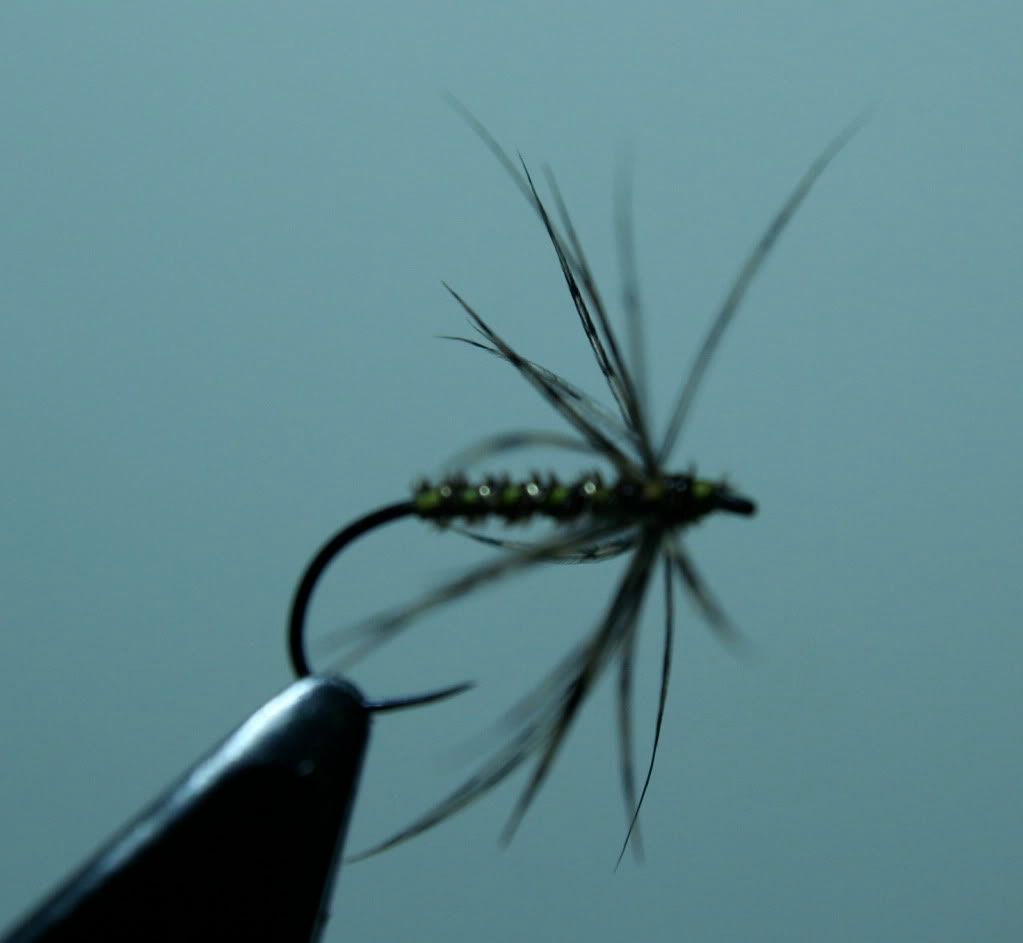March Brown - An interpretation
Posted: Mon Nov 02, 2009 11:37 am
Common on the rocky rivers of northern UK, this fly has close relations around the world. Here in the UK it hatches generally sometime between mid-day and mid afternoon (and is often confused with the False Brown) during March and April. It is difficult to be precise as weather changes have a great influence on when they start to appear and for how long.
Tis is a large up wing fly for the Northern rivers. With a body up to 15mm its tails can be as long as 30mm. The natural dun has a dark brown body with pale yellow-straw banding.
There are many spider patterns for this and Pritt gave five dressing (Great Brown, Brown Drake & Dun Drake) in his book.
"No 11 Hook 3
Wings - From the tail of a Partridge
Body - Pale orange silk, dubbed with a little Hare's ear and yellow mohair, mixed; ribbed over with a little yellow silk.
Tail - Forked with two strands from a Peacock tail
Legs - From the back of a Partridge."
"No 12 Hook 2
Wings - From a quill feather of a hen pheasant
Body, Tail and Legs - as in no 11"
"No 13 Hook 2
Wings - Hackled with a reddish feather from he outside of a Woodcock's wing
Body - Orange silk dubbed over with a little fur from a Fox's ear"
"No 14 Hook 2
Wings - From tail of a Partridge
Body - Orange and yellow silk twisted, dubbed with fur from a Fox's ear
Leg's - From a Wren's tail"
"No 15 Hook 2
Wings - from the Hen Pheasant's wing
Body and Legs - Sames a No 14"
He went on to explain
"The five dressings here given admit of little preference as killers. The hackled fly - though comparatively rarely dressed - will be found very successful on cold, rough days, and the winged flies are indispensable on fair days through March, April and not frequently into May."
Following on from the Kite Spider, I offer another version which works equally.
Hook - Tiemco 103BL (eye straightened)
Silk - 8/0 Uni Thread Yellow
Body - Brown Condor substitute (3 herls) twisted and taken down the body in open turns to show the thread
Rib - Very fine gold wire
Hackle - 2 turns of brown English partridge back feather
Head- Sing;e turn of Brown Condor substitute (in the style of Lister).

Sorry about the lighting - I need to improve.
Tis is a large up wing fly for the Northern rivers. With a body up to 15mm its tails can be as long as 30mm. The natural dun has a dark brown body with pale yellow-straw banding.
There are many spider patterns for this and Pritt gave five dressing (Great Brown, Brown Drake & Dun Drake) in his book.
"No 11 Hook 3
Wings - From the tail of a Partridge
Body - Pale orange silk, dubbed with a little Hare's ear and yellow mohair, mixed; ribbed over with a little yellow silk.
Tail - Forked with two strands from a Peacock tail
Legs - From the back of a Partridge."
"No 12 Hook 2
Wings - From a quill feather of a hen pheasant
Body, Tail and Legs - as in no 11"
"No 13 Hook 2
Wings - Hackled with a reddish feather from he outside of a Woodcock's wing
Body - Orange silk dubbed over with a little fur from a Fox's ear"
"No 14 Hook 2
Wings - From tail of a Partridge
Body - Orange and yellow silk twisted, dubbed with fur from a Fox's ear
Leg's - From a Wren's tail"
"No 15 Hook 2
Wings - from the Hen Pheasant's wing
Body and Legs - Sames a No 14"
He went on to explain
"The five dressings here given admit of little preference as killers. The hackled fly - though comparatively rarely dressed - will be found very successful on cold, rough days, and the winged flies are indispensable on fair days through March, April and not frequently into May."
Following on from the Kite Spider, I offer another version which works equally.
Hook - Tiemco 103BL (eye straightened)
Silk - 8/0 Uni Thread Yellow
Body - Brown Condor substitute (3 herls) twisted and taken down the body in open turns to show the thread
Rib - Very fine gold wire
Hackle - 2 turns of brown English partridge back feather
Head- Sing;e turn of Brown Condor substitute (in the style of Lister).

Sorry about the lighting - I need to improve.